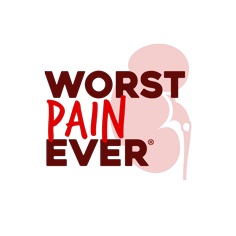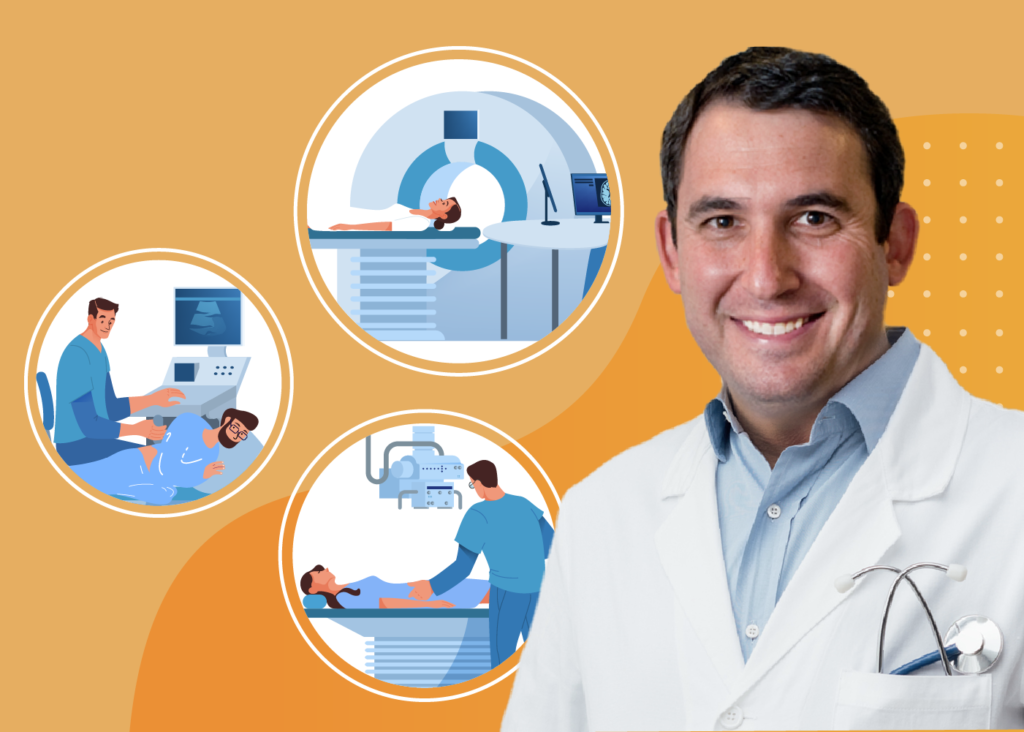CT scans, KUB X-rays and ultrasounds – which diagnostic test is ‘better’ than the others? Dr. Brian Eisner, MD, from Massachusetts General Hospital, tells us about the three most common kidney stone imaging methods, and how your urologist decides which is best for you.
What are CT scans, KUBs and ultrasounds?
To put it simply, a computed tomography (CT) scan is a kidney stone imaging method that takes a photograph of your kidney stone and provides you with details of that stone, such as its exact size, location, density and how difficult it will be to break up. We can magnify it and look at it with the rest of your anatomy, which is incredibly helpful in informing our decisions on the right procedure for our patients.
On the other hand, a kidney, ureter, bladder (KUB) X-ray is a non-invasive diagnostic abdominal X-ray used to detect the cause of unknown pain in the back, flank or abdomen. It helps us understand the location of the stone and stone size.
Similarly, a kidney ultrasound (also called a renal ultrasound) is an imaging test that uses sound waves to capture an image of your kidneys and bladder.
Are there any differences in the accuracy of these three tests?
Most urologists consider CT scans to be the gold standard. It has the highest accuracy in predicting the presence or absence of a kidney stone, and is able to provide a lot of detailed anatomical information for a more comprehensive diagnosis.
While KUBs and ultrasounds are also effective, their results can be limited by patient size. It can be difficult for the soundwaves to penetrate deeper tissues and fat, which can affect the image quality of the ultrasound. However, for patients who don’t have a particular history of kidney stones, or who I’m screening based on vague symptoms, a KUB and ultrasound is a good way to identify the presence of a stone.
It seems like CT scans are the clear winner. Why does my doctor still recommend that I undergo a KUB or an ultrasound?
CT scans are great for when we need accurate information very quickly, such as for patients who are in severe pain. The pain might be acute renal colic, which usually happens when a stone is blocking the urinary tract, causing nausea or vomiting. CT scans help urologists understand the stone size and the odds of them passing it, or if a procedure is required.
On the other hand, KUB and ultrasounds are different kidney stone imaging methods that are useful for the evaluation of smaller or less developed stones. Ultrasounds do not use radiation and help to see whether the kidney is backed up or dilated, which we call “hydronephrosis”.
We often use them both together, because the KUB gives a more accurate measurement of the stone size, while the ultrasound shows us the kidney cortex, the health of the kidney and whether the kidney is blocked or not. This helps us form a more comprehensive evaluation of the patient’s condition and the best treatment plan for them.
I’ve heard that the radiation from CT scans is harmful. Is this true?
There is some discussion amongst urologists about limiting CT scans for patients because they involve exposure to radiation, which can be harmful to the patient over time. But the good news is that the CT scans for stone disease can be done without contrast (a substance taken by the mouth or injected into an intravenous line that helps a particular organ be seen in the scan more clearly).
Additionally, urologists follow a principle in radiology, ALARA, which stands for “as low as reasonably achievable”. Many – if not all – hospitals exercise a “low dose kidney stone protocol CT scan”, in which we give patients the lowest possible radiation dose that still allows us to get the clinical information we need.
So, while I don’t think every patient with a kidney stone needs a CT scan, there are certainly low dose protocols in place to minimize the radiation. KUB and ultrasounds are great screening tools as well, but when we need immediate, extremely accurate information, CT scans are the way to go.
This interview has been edited for length and clarity.
Dr. Brian Eisner is the Co-Director of the Kidney Stone Program at the MGH. He specializes in kidney stone surgery, kidney stone prevention, endourology and related research. He serves as the Medical Director of the Massachusetts General Hospital Department of Urology and the Chief of the Division of Urology at Newton Wellesley Hospital.
His clinical practice focuses on kidney stone prevention, minimally invasive and surgical treatments for kidney stones, and endourology. He is actively involved in research involving kidney stone prevention, risk factors for kidney stone disease and surgical treatment of kidney stones.





